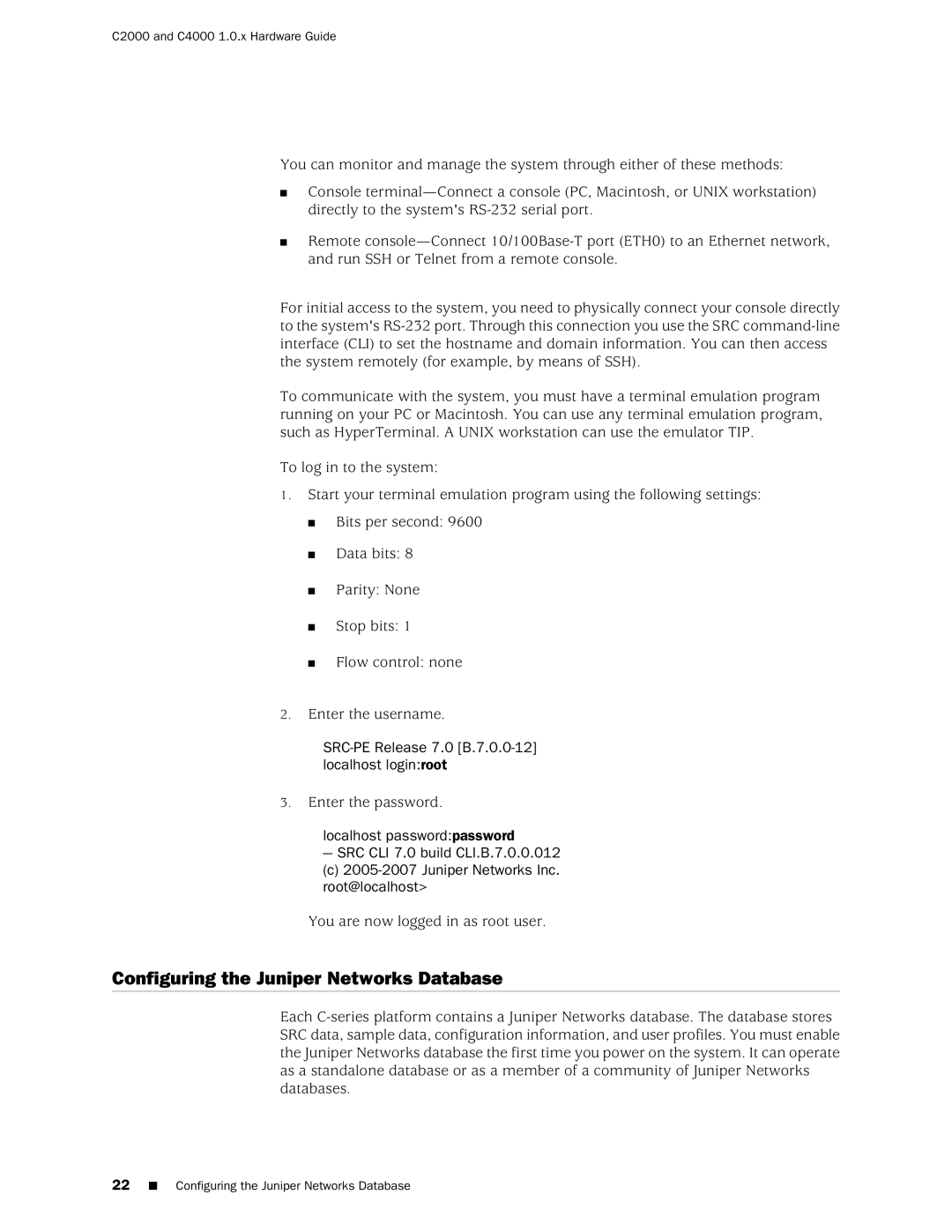C2000 and C4000 1.0.x Hardware Guide
You can monitor and manage the system through either of these methods:
■Console
■Remote
For initial access to the system, you need to physically connect your console directly to the system's
To communicate with the system, you must have a terminal emulation program running on your PC or Macintosh. You can use any terminal emulation program, such as HyperTerminal. A UNIX workstation can use the emulator TIP.
To log in to the system:
1.Start your terminal emulation program using the following settings:
■Bits per second: 9600
■Data bits: 8
■Parity: None
■Stop bits: 1
■Flow control: none
2.Enter the username.
3.Enter the password.
localhost password:password
---SRC CLI 7.0 build CLI.B.7.0.0.012
(c)
You are now logged in as root user.
Configuring the Juniper Networks Database
Each
22■ Configuring the Juniper Networks Database
